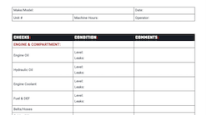Opinion: Rethinking Leases in the Digital, Just-in-Time Marketplace
The digital marketplace has not only reshaped the retail landscape, but also has caused a fundamental shift in the transportation industry, as companies are forced to provide the low-cost/no-cost and on-demand delivery service consumers now expect.
Companies like Walmart and Amazon offer fast and free shipping, competitive pricing and convenience. As a result, fleets are reassessing delivery models to meet the demanding consumer expectations and delivery pressures.

Sasso
Transportation companies that are used to longhaul delivery and looking to expand into just-in-time, or JIT, delivery must assess the composition of their fleets, as new delivery patterns may require additional and different trucks to provide shorter, more frequent runs. This assessment can help them stay competitive and survive in the evolving distribution landscape.
Based on a survey conducted at the 2018 NAFA Institute & Expo, 63% of fleet managers expect replacement cycles for trucks and trailers to be shortened in the next three to five years. Shorter lease terms mean more visits to the dealership and more negotiations with dealers.
However, a benefit of shorter term financing structures is that newer trucks tend to be more fuel efficient than those they replace. Fuel commands a large share of fleets’ total operating costs so any gain in fuel efficiency can yield large-scale savings. For example, with a fleet of 1,000 trucks that each cover 100 miles per day, saving 5 cents per gallon can improve the company’s bottom line by about $150,000 every month.
Maintenance costs are another significant expense for fleets. According to a 2017 report from the American Transportation Research Institute, total maintenance and repair costs have increased 60% since 2008 and now equal 16.7 cents per mile.
To stay competitive, fleet managers must determine how to best manage all of these expenses. One way is through flexible finance solutions that offer shorter terms and the ability to upgrade equipment frequently.
For example, equipment leases provide the opportunity to commit to shorter life cycles and more frequent upgrades, offering the opportunity to take advantage of higher fuel efficiency and lower maintenance costs prevalent in newer equipment.
Fair market value leases, also known as operating leases, give lessees the option to either return, re-rent or purchase the equipment at market value prices. These are ideal for fleet companies looking to upgrade models in a relatively short period of time.
Tax-oriented leases, meanwhile, allow the lessor to claim the tax benefits of ownership through depreciation deductions and pass those benefits to the lessee in the form of reduced payments. These payments are often fixed and won’t rise as interest rates increase.
Terminal Rental Adjustment Clause, or TRAC, leases, which allow companies to purchase equipment at the end of lease maturity at a predetermined residual amount set at lease inception, are an option for companies looking to resell assets in the secondary market.
By using shorter equipment life cycles, companies can successfully adapt to changing consumer demands, control costs and maximize on efficiencies. Lease financing is one way fleets can acquire the equipment necessary to do so.
Anthony Sasso is president of equipment finance at TD Bank and has more than 30 years of experience in the industry.




